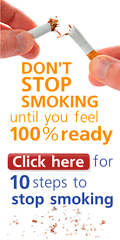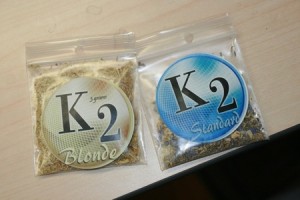 Without question, cigarette smoking has negative consequences for your health and adds to health costs for both individuals and employers. Yet cigarettes are also a legal product that people can choose to use in all 50 states. For businesses, it is a vexing problem, and more and more businesses are choosing to screen for nicotine before they hire…much to the displeasure of current smokers.
Without question, cigarette smoking has negative consequences for your health and adds to health costs for both individuals and employers. Yet cigarettes are also a legal product that people can choose to use in all 50 states. For businesses, it is a vexing problem, and more and more businesses are choosing to screen for nicotine before they hire…much to the displeasure of current smokers.
The NYTimes covered the situation yesterday. They note that some states have rejected smoker bans and some have not, but that regardless, a trend is emerging:
There is no reliable data on how many businesses have adopted such [non-smoker] policies. But people tracking the issue say there are enough examples to suggest the policies are becoming more mainstream, and in some states courts have upheld the legality of refusing to employ smokers.
Steven C. Bjelich, the chief executive of St. Francis Medical Center in Cape Girardeau, Mo., adds “We felt it was unfair for employees who maintained healthy lifestyles to have to subsidize those who do not…Essentially that’s what happens.”
Of interest is the fact that many of those banning smoking and nicotine testing job applicants are large health organizations and hospitals. It probably won’t surprise you that the American Cancer Society and the American Lung Association haven’t been hiring smokers. Hospitals taking up the standard is a little vareniclinerx more unusual, and points to a trend. Organizations like the Service Employees International Union (SEIU) are being asked about the issue as well, although it is at the moment not a high priority.
The NYT closes the story with an interesting anecdote – 68 year old John Stinson applied for a job at the Cleveland Clinic, despite their no-smoking/er policy and his old decades old habit. He stayed clean in time for his nicotine urine test …and lo and behold, it wasn’t just a break from a bad habit – it helped him quit smoking.
Still, people are understandably uneasy about the decision of employers to bar smokers. For some it is a question of the right to use a legal product; for others it is the fact that a non-smoker policy falls more heavily on those in service jobs. The 2010 Monitoring the Future survey for example found that non-college bound students smoke at double the rate of college bound students.
What are your thoughts on this trend in business? A good large scale policy, or a violation of people’s rights and privacy? Individual states are grappling with the issue as well, and it wouldn’t surprise me at all if one day this question made its way as many others do to the United States Supreme Court.






